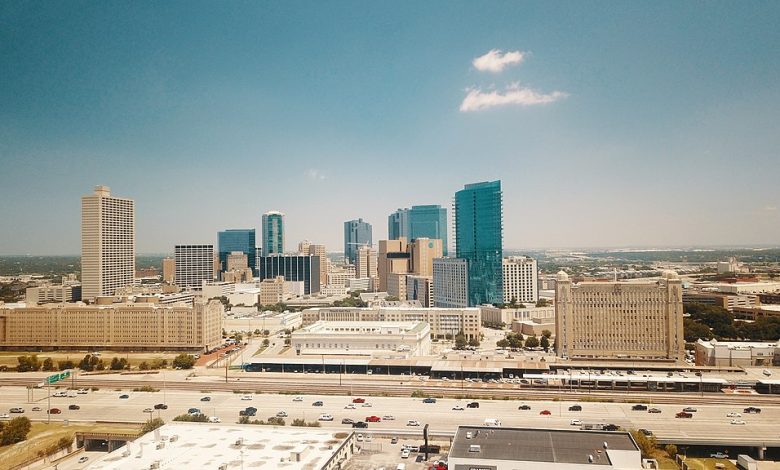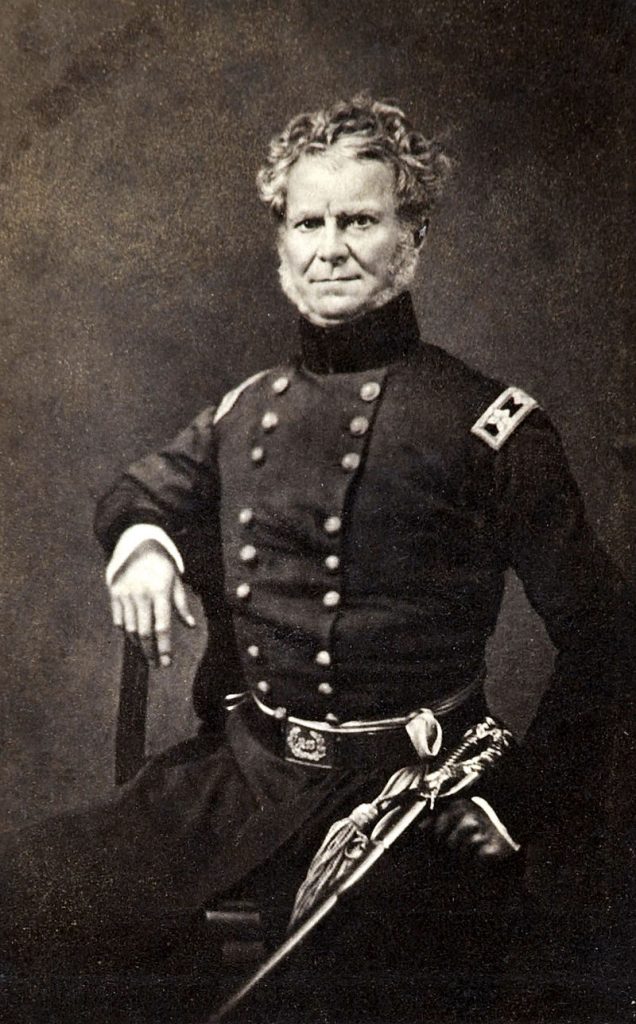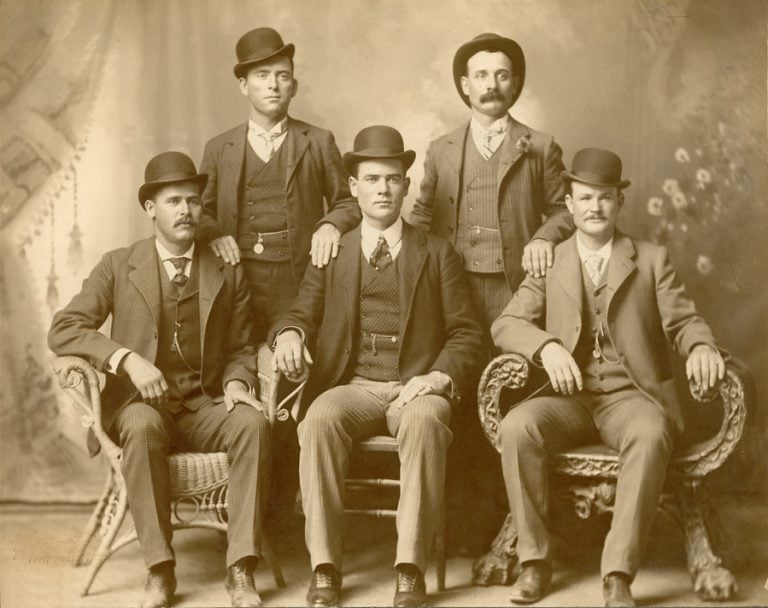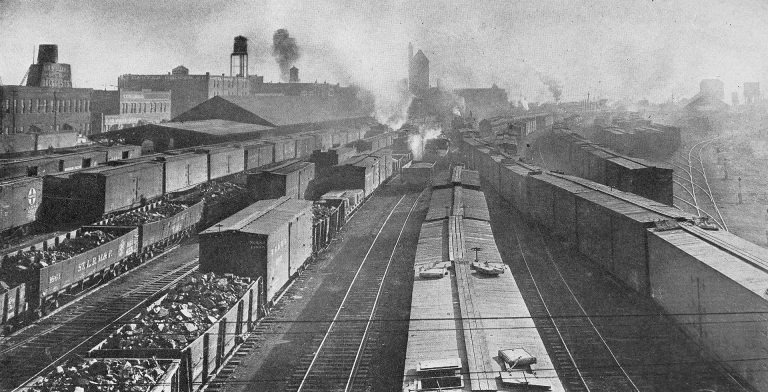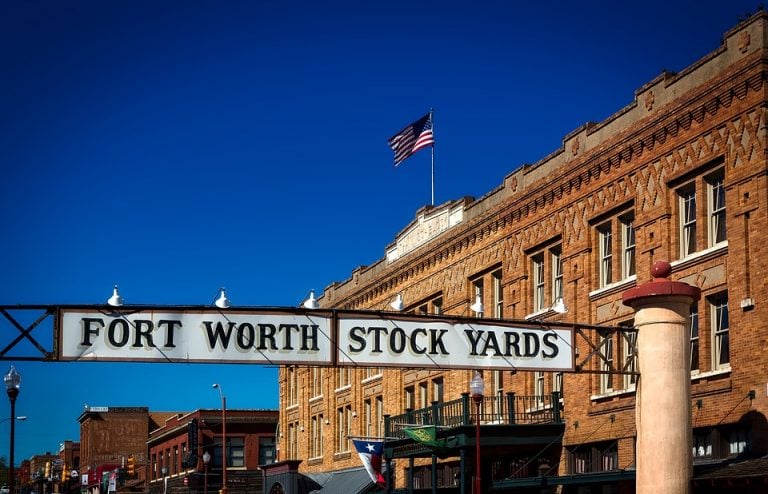Learning a history about a city or a town is something that we should pay attention to for a time. It’s because we get to know about the interesting people and the crucial events that have shaped what it is today. It can be fascinating, too.
Fort Worth’s history is no exception. This city in north-central Texas has a fascinating (and even turbulent) past that helped it evolve into the urban center it is today. It is one of the biggest cities in Texas and the second-largest city in the Dallas-Fort Worth metroplex in terms of population.
Fort Worth is considered one of the fastest-growing cities in the entire US – a bustling municipality with schools, offices, museums, theaters, shops, cafes, restaurants, nightlife spots, and lots of other amenities. Every town and city has its distinct page of history, and Fort Worth is no exception. But its history is far more interesting compared to that of its neighbors. It rose from its earlier reputation as a sleepy town to becoming a dusty, wild, and turbulent frontier town. It is where history’s most infamous and legendary outlaws established their notoriety. But Fort Worth is also known as the land of the noble and the brave.
Fort Worth proudly holds the bulk of the American West history and culture, and numerous local museums display the relics of such heritage. Many of Fort Worth’s architecture will also remind you of its past. The city’s earliest history can be closely linked with the early history of north Texas.
The origins of Fort Worth
The area that is now Fort Worth was once a lush and fertile land. The so-called Native American Indians were the first inhabitants of the area. They were engaged in hunting as the region was teeming with game animals and other sorts of wildlife. However, the area proved to be tempting for the European settlers as well.
As said before, the earliest history of Fort Worth can be closely linked with the earliest history of north Texas. Fort Worth was one of the seven forts assigned to protect the settlers against attacks by the Indian tribes on the advancing frontier. Actually, ten forts had been originally proposed by Major General William Jenkins Worth in January 1849. During that time, Worth commanded the Department of Texas. One month later, he died of cholera.
General William S. Harney took over Worth’s position, assuming the command of the Department of Texas. Then he ordered Major Ripley Arnold to find another site to establish new forts. In June 1849, Arnold established a post on the banks of the Trinity River. He named the new post “Camp Worth” in honor of the deceased general. Later on, Arnold moved the post to a new location – a north-facing bluff (a hill with a steep face) overlooking the river. In November of that same year, the new post was given the name “Fort Worth” by the US War Department – and this is where the town Fort Worth was born.
Early commercial development
Despite ongoing attacks and threats by the Indians, Anglo-American pioneers quickly settled in and around Fort Worth. When the opposition from the natives came to an end, the white settlers stayed there for good.
Since then, development had been slowly taking place in Fort Worth. The first school opened in 1854. A department store, a flour mill, a general store, and a stagecoach service soon followed. The arrival of the Southern Pacific Stage Line was used as a western terminus on the westward journey to California. Fort Worth enjoyed an economic boom due to the thriving cattle industry, which led to the establishment of new businesses ranging from a dry goods store to an exchange office. Fort Worth was incorporated in 1873.
A “Panther City”
However, the widespread financial crisis in Europe and North America in 1873 dealt a severe blow to Fort Worth’s local cattle industry. The harsh winter months did not do to help the situation, either. To make things worse, the railroad company had discontinued laying tracks 30 miles outside of Fort Worth. All of these unfortunate series of events brought Fort Worth into a slump, leading itself to become a “sleepy town.”
An article from a Dallas-based newspaper claimed that Fort Worth was so sleepy that a panther wandered in the middle of the downtown and slept there during the evening. Rather than taking it as an insult, the locals wholeheartedly embraced the panther as a new icon for the city. Fort Worth named its first fire engine “panther.” Soon, other establishments such as saloons and meat markets opened and operated with a “panther” name on them. Fort Worth High School even adopted the panther as a mascot.
It looks like the panther became a lucky charm for Fort Worth, which quickly recovered from the financial crisis the following year. The arrival of the Texas and Pacific Railway in 1876 spurred a newfound economic boom, which transformed Fort Worth from a sleepy town to a premier cattle industry hub of wholesale trade.
Fort Worth’s “wild” past
At the height of Fort Worth’s cattle boom era, the cowboys passing the city along the legendary Chisholm Trail would spend their leisure time in the downtown known as “Hell’s Half Acre.” It was once the favorite stomping grounds of the infamous legends of the Wild West. The tales of Butch Cassidy and the Sundance Kid were the talk of the town, and have remained some the most fascinating episodes of Fort Worth’s history up to now.
Butch Cassidy’s Wild Bunch was probably the most successful train robbery gang in history. When they weren’t robbing banks or trains, they would spend their downtime at Hell’s Half Acre, where they continued to revel at saloons and dance halls around town.
One of Fort Worth’s historic attractions, the Sundance Square, used to be a hot spot for other outlaws such as Doc Holliday and Wyatt Earp (who became the famous participants of the “Gunfight at the O.K. Corral” shootout in Arizona, in 1881)
Fort Worth in the 20th and 21st centuries
From the turn of the century onwards, Fort Worth had entered new industries such as meatpacking, which boosted the town’s economic prosperity. As a result, Fort Worth’s population tripled in size, attracting people who live in the outlying areas as well as immigrants.
Fort Worth also built three oil refineries even before the oil boom in the west of Texas. Oil was discovered in towns such as Ranger, Desdemona, Breckenridge, and Burkburnett. Fort Worth was strategically situated among these towns, and the oil boom further stimulated the local economy. By the 1920s, five more oil refineries had been constructed. Those who got to taste the oil bonanza began to build expensive and lavish homes. The oil boom also helped Fort Worth to provide fuel, which was in demand during World War I.
During World War II, the Fort Worth Army Airfield was established by the US Army. The base’s original mission was to train and support heavy bombing groups and wings. It is now called Carswell Air Force Base.
When the Dallas/Fort Worth Airport opened in 1974, it brought another economic boom for the city. This meant more businesses and more employment opportunities not just for Fort Worth residents but for people living in the outskirts as well.
Downtown Fort Worth experienced major revitalization during the 1980s, starting with the establishment of the Sundance Square, which is now one of the best-known commercial, retail, entertainment, and residential districts in Fort Worth. The following years saw more developers breaking ground on high-rise commercial buildings, offices, and hotels.
Fort Worth became one of the fastest-growing cities in the US from 2000 to 2006. It was voted as one of “America’s Most Livable Communities” by the Partners for Livable Communities in 2004.
Some of Fort Worth’s earliest Art Deco and Streamline Moderne-style structures survive to this day, such as the Public Safety and Courts building (1938), the Lone Star Gas Company (1929), the W.T. Grant Department Store (1939), the Will Rogers Memorial Center (1936), and the Texas and Pacific Railway Terminal (1931).
Fort Worth is now a contemporary, cosmopolitan, and family-friendly city, a far cry to its old Wild West past. Nevertheless, Fort Worth is very much a historical city. It is proud of its Wild West heritage and celebrates it through numerous events, most of which are held in the historic district of Fort Worth Stockyards – rodeo shows, music, festivals, and a lot more. You can also find several museums and galleries in Fort Worth that pay tribute to its Wild West culture, other museums showcase modern and contemporary art.
Forth Worth today
Fort Worth is one of the biggest cities in Texas. It is home to 741,206 people (as of 2010), making it the most populous municipality in Tarrant County, and the second-most populous community in the Dallas-Fort Worth metroplex.
The city enjoys a diverse population. It mostly consists of white residents, which make up 61.6% of the population. Residents of Hispanic or Latino descent come second, with 34.1%. They are followed by African-Americans (18.9%) and Asian-Americans (3.7%). Religion still plays a significant role in the lives of Fort Worth residents – in fact, the city is part of the so-called “Bible Belt,” which comprises of conservative evangelical Protestants. Fort Worth, as well as Tarrant County, are dominated by Protestants, as opposed to the city of Dallas (and Dallas County) which mostly comprises of Roman Catholic residents.
Whether your preference is public or private, charter or homeschool, or higher education, vocational, technical, or trade schools, Fort Worth offers plenty of options for everyone. It has several public and private (both parochial and secular) schools. The city has more than 84,000 students in 82 elementary schools, 24 middle schools, 21 high schools and 16 institutes of higher education. These campuses include Texas Christian University, Texas Wesleyan University, University of Texas at Arlington (downtown campus), Southwestern Baptist Theological Seminary, Tarrant County College, Texas A&M School of Law, The Culinary School of Fort Worth, among others.
Fort Worth is a prosperous, bustling and progressive city that welcomes diversity and new changes, but at the same time, it also gives a big nod to its tumultuous but colorful past. It is home to the rich and vibrant Western arts and culture, as well as culinary treasures. Many attractions in Fort Worth appeal to both locals and tourists that come from other states and overseas. It has something for everyone – fans of the Wild West, lovers of the nature and the outdoors, art enthusiasts, science and history buffs, and gastronomes. Go to Visit Fort Worth website to discover more about this wonderful city.

